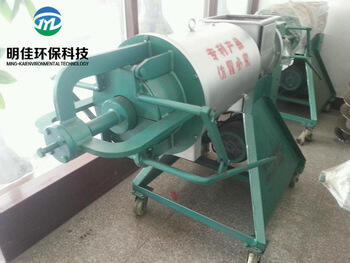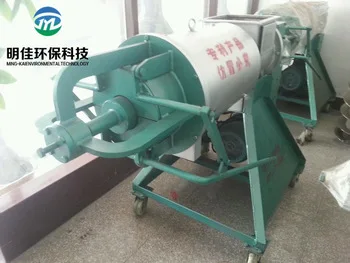The whole purpose of high heat aerobic fermenters and anaerobic fermenters are two different processes to make some amazing foods. In both of these ideas, microorganisms were the smallest living thing involved. Sugar-degrading microorganisms which help in degradation of sugars. The only difference whether there is or not oxygen present, and how warm the surroundings are, will be explain by Mingjia.

Impact of Oxygen on High-Temperature Fermentation
We introduced oxygen in high-temperature aerobic fermenters or Aerobic digester compost also containing sugar and microorganisms. This oxygen air helps it yeast function quicker and better. Whereas when yeast is provided with oxygen, it will use that to break the sugar into two main parts - carbon and alcohol. It is a kind of rapid ripening, known as "quick fermentation". If you are interested in the baking world, there is a good chance that you have come across this term at least once or twice since many times it seems like an easy way to accelerate preparation time and get favorable results of yield flavor with recipes such as bread, some beers or certain types of yoghurt.
What Happens Without Oxygen?
Anaerobic fermentation is another tale entirely. This comes into play when there is no oxygen in the environment. Now the yeast and bacteria continue to metabolise sugars, but they do so in an anaerobic fermentation process. Instead, they ferment to form carbon dioxide and ethanol. It is a frequently employed method to make wine, sourdough bread and other types of products. They each have an interesting characteristic in flavor that can be traced back to the unique fermentation of these foods like Bioreactors and fermenters market.
Fermentation and Temperature
Fermentation relies on temperature. How active that yeast is determines how good the fermentation process works. The ideal temperature for anaerobic fermentation is around 20C--when it''s cooler. This is the temperature range at which yeast and bacteria can operate optimally to produce flavors. On the other hand in high-temperature aerobic fermentation temperatures, are much higher from about 106 degrees Fahrenheit and up. The heat really speeds up the fermentation process, which here is a good thing but also requires you to keep an eye on everything and make sure your stuff isn't getting moldy.
The Ups and Downs of Both Techniques
Both the high-temperature aerobic fermentation and anaerobic have their good sides benefits as well as drawbacks. For example, finished products produced with high-temperature fermentation or Organic fertilizer fermentation will be much faster than anaerobic fermentation. But there is the potential for over-fermentation, and if certain conditions are met they can produce harmful substances that lead to off-flavors in your finished product. So it pays to be very attentive when fermenting at high temperatures.
Anaerobic fermentation, on the other hand, is a process that takes significantly longer to finish but it has its own advantages as well. The method is one less likely to rot and has a tendency to generate fewer toxic substances; therefore, it can be the safer option in some situations. Anaerobic fermentation also produces unique flavors and mouthfeels that are satisfying to most. This slower fermentation process results in foods tasting different; for example sourdough bread and kimchi.
 EN
EN
 AR
AR
 BG
BG
 HR
HR
 CS
CS
 DA
DA
 NL
NL
 FI
FI
 FR
FR
 DE
DE
 EL
EL
 HI
HI
 IT
IT
 JA
JA
 KO
KO
 NO
NO
 PL
PL
 PT
PT
 RO
RO
 RU
RU
 ES
ES
 SV
SV
 TL
TL
 IW
IW
 ID
ID
 UK
UK
 VI
VI
 HU
HU
 TH
TH
 TR
TR
 AF
AF
 GA
GA
 BE
BE
 BN
BN
 KM
KM
 LO
LO
 LA
LA
 MN
MN
 MY
MY
 HAW
HAW


